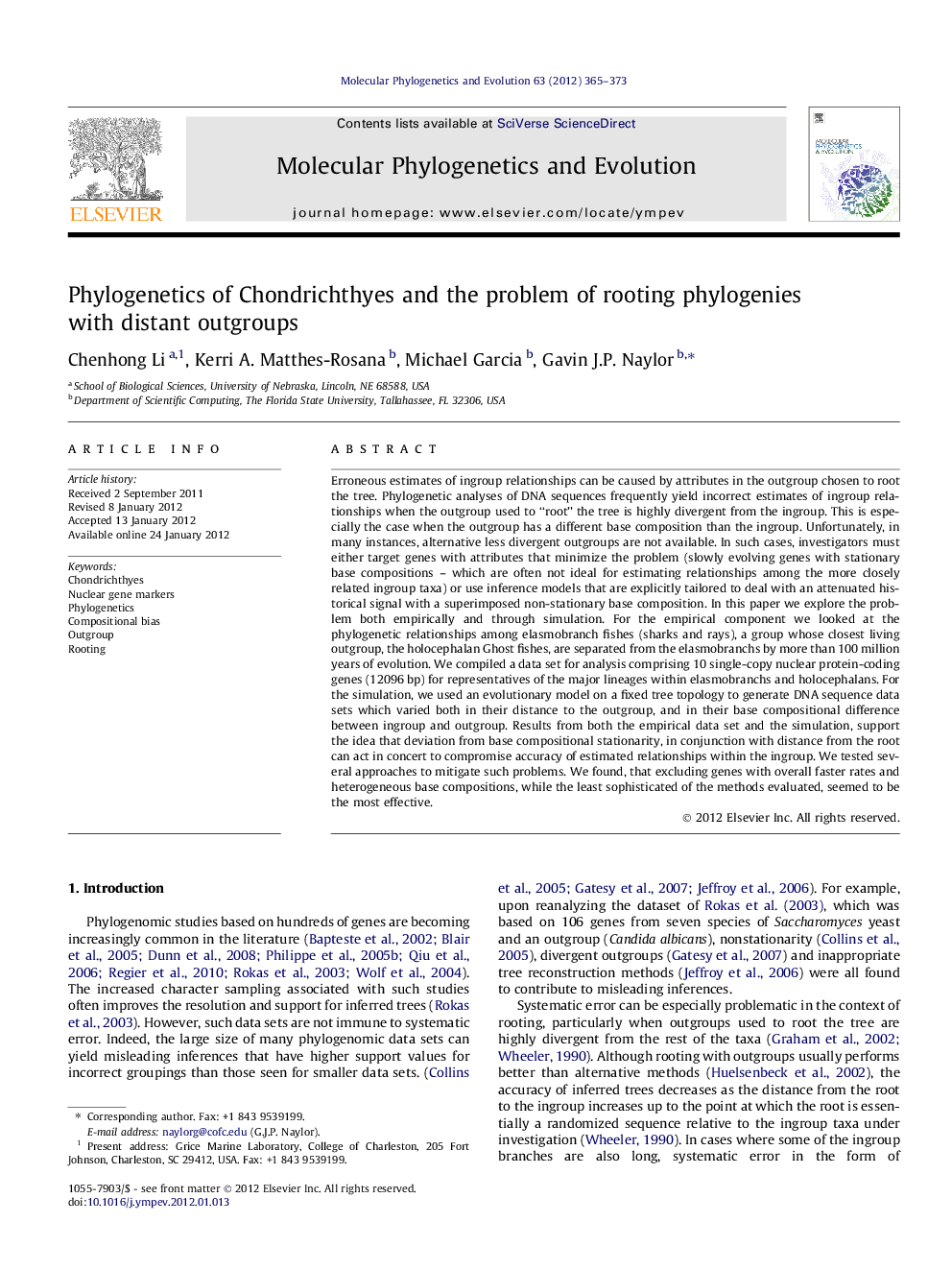| Article ID | Journal | Published Year | Pages | File Type |
|---|---|---|---|---|
| 2834054 | Molecular Phylogenetics and Evolution | 2012 | 9 Pages |
Erroneous estimates of ingroup relationships can be caused by attributes in the outgroup chosen to root the tree. Phylogenetic analyses of DNA sequences frequently yield incorrect estimates of ingroup relationships when the outgroup used to “root” the tree is highly divergent from the ingroup. This is especially the case when the outgroup has a different base composition than the ingroup. Unfortunately, in many instances, alternative less divergent outgroups are not available. In such cases, investigators must either target genes with attributes that minimize the problem (slowly evolving genes with stationary base compositions – which are often not ideal for estimating relationships among the more closely related ingroup taxa) or use inference models that are explicitly tailored to deal with an attenuated historical signal with a superimposed non-stationary base composition. In this paper we explore the problem both empirically and through simulation. For the empirical component we looked at the phylogenetic relationships among elasmobranch fishes (sharks and rays), a group whose closest living outgroup, the holocephalan Ghost fishes, are separated from the elasmobranchs by more than 100 million years of evolution. We compiled a data set for analysis comprising 10 single-copy nuclear protein-coding genes (12096 bp) for representatives of the major lineages within elasmobranchs and holocephalans. For the simulation, we used an evolutionary model on a fixed tree topology to generate DNA sequence data sets which varied both in their distance to the outgroup, and in their base compositional difference between ingroup and outgroup. Results from both the empirical data set and the simulation, support the idea that deviation from base compositional stationarity, in conjunction with distance from the root can act in concert to compromise accuracy of estimated relationships within the ingroup. We tested several approaches to mitigate such problems. We found, that excluding genes with overall faster rates and heterogeneous base compositions, while the least sophisticated of the methods evaluated, seemed to be the most effective.
Graphical abstractFigure optionsDownload full-size imageDownload as PowerPoint slideHighlights► Ten nuclear gene markers were found useful in studying phylogeny of chondrichthyans. ► Results based on 10 nuclear loci (12,096 bp) do not support the “Hypnosqualean” hypothesis. ► Distant outgroup and nonstationarity together could cause error in outgroup rooting. ► Excluding genes with overall faster rates and heterogeneous base compositions can sometimes ameliorate problems associated with outgroup rooting.
